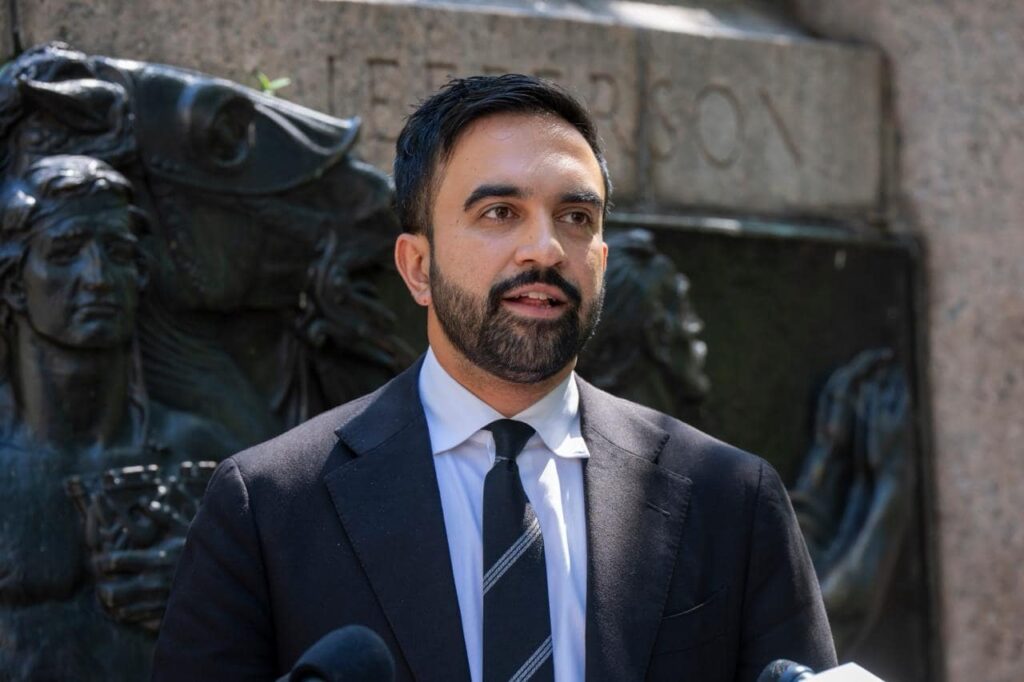The dynamic world of cryptocurrency trading often draws parallels with high-stakes betting markets, where traders speculate and hedge based on rapidly changing odds and real-time information. A striking example can be observed in the New York City mayoral race, where the prediction marketplace has captured the attention of crypto enthusiasts. This phenomenon highlights the intersection of political events and the financial frameworks that predict outcomes, offering a fascinating lens through which to understand the potential and volatility inherent in such markets. Let’s delve into the current landscape and see why certain candidates are being favored so heavily.
The New York City Mayoral Race: A Cryptocurrency Betting Perspective
Driven by substantial betting volumes, the New York City mayoral market has hit an astounding $303,797,754 in transactions. Within this speculative arena, Zohran Mamdani’s candidacy shines with a commanding 95% implied probability, as indicated by Polymarket’s data. His ascension began with a pivotal moment in July when Andrew Cuomo’s prospects took a significant downturn.
Analyzing the Market Dynamics
On Polymarket, Mamdani trades at 95% likelihood, with the ‘Yes’ option priced at 95.5¢ and ‘No’ at 4.6¢. His contract, amassing a turnover close to $75,399,890, showcases a robust and growing belief in his eventual victory. Such figures are bolstered by ongoing news and trader sentiment, reflecting confidence in Mamdani’s chances.
Conversely, Andrew Cuomo has seen his influence dwindle to a mere 4%, based on a ‘Yes’ price of 4.1¢ and a ‘No’ at 96.1¢. His fall from favor has absorbed around $18,356,111 in market wagers, signaling a pronounced shift in trader sentiment.
The Shift in Support and Market Implications
The odds present a clear consolidation of support for Mamdani, who has seen his line climb persistently over the summer months, while his competitors have struggled to attract significant betting interest. Notable figures such as Curtis Sliwa, pro-Bitcoin advocate Eric Adams, and Jim Walden are currently trading below 1%, reflecting their diminished perceived chances.
Despite the inherently speculative nature of prediction markets, which are distinct from traditional polls, they offer a unique glimpse into the collective sentiment of thousands of traders. These markets adjust dynamically, responding to news and developments in real-time, thereby providing a fluid and up-to-date picture of the race.
The Unquestionable Front-Runner
With Mamdani commanding a staggering 95% probability and nearest adversaries not surpassing the 4% mark, the cryptocurrency markets deliver a decisive verdict: Mamdani is the clear front-runner by a substantial margin. Such an outlook underscores the predictive power and influence these markets have in forecasting political outcomes, particularly when money is at stake.
Can prediction markets like Polymarket accurately forecast political outcomes?
Prediction markets aggregate data from numerous traders, creating odds that reflect a collective assessment based on real-time information. While not infallible, these markets often provide insightful forecasts that can predict political outcomes with some accuracy, especially when updated frequently as events unfold.
What makes prediction markets different from traditional opinion polls?
Unlike opinion polls that capture public sentiment at a specific moment, prediction markets represent a dynamic ecosystem where odds shift based on continuous trader activity and news developments. This allows for a more fluid and adaptable forecast of outcomes, reflecting immediate changes in information.
Why is Zohran Mamdani seen as the favorite in the New York City mayoral race?
Mamdani’s strong positioning in the market is largely due to sustained trader confidence, as reflected in consistent high probability ratings and large turnover. His growing popularity over recent months and overall market sentiment have significantly contributed to his perceived status as the front-runner.
In summary, this comprehensive guide to the New York City mayoral race illustrates not only the key political contenders but also the powerful role of prediction markets in shaping perceptions and forecasts. By analyzing these markets, we gain a deeper understanding of both the race itself and the broader implications of financial speculation in political spheres.

